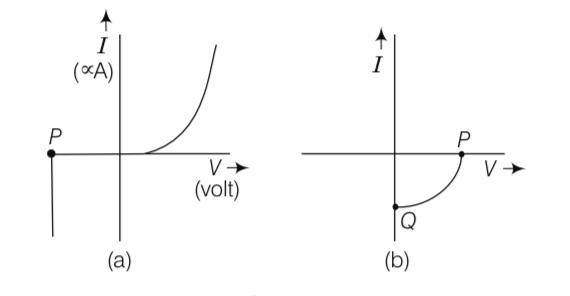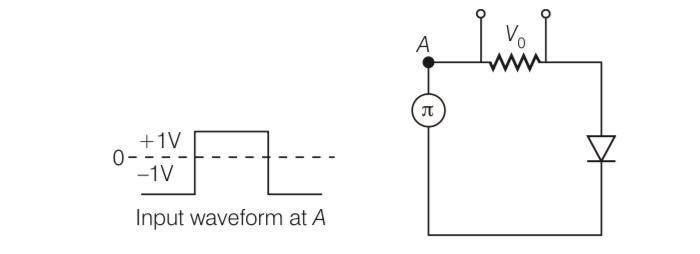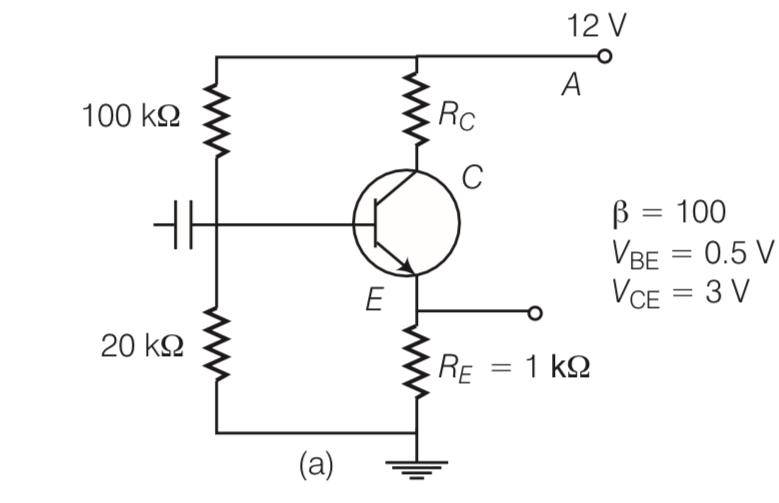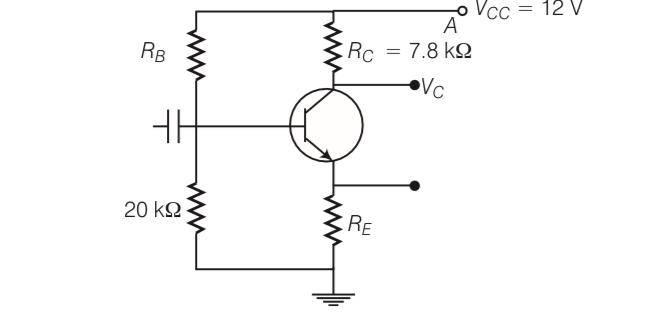Physics NCERT Exemplar Solutions Class 12th Chapter Fourteen
Get insights from 70 questions on Physics NCERT Exemplar Solutions Class 12th Chapter Fourteen, answered by students, alumni, and experts. You may also ask and answer any question you like about Physics NCERT Exemplar Solutions Class 12th Chapter Fourteen
Follow Ask QuestionQuestions
Discussions
Active Users
Followers
New answer posted
6 months agoContributor-Level 10
This is a Short Answer Type Questions as classified in NCERT Exemplar
Explanation- E=hc/ = = 2.06eV
The incident radiation which is detected by the photodiode having energy should be greater
Than the band-gap. So, it is only valid for diode D2.Then, diode D2 will detect this radiation.
New answer posted
6 months agoContributor-Level 10
This is a Short Answer Type Questions as classified in NCERT Exemplar
Explanation-
(i) The characteristic curve (a) is of Zener diode and curve (b) is of solar cell.
(ii) The point P in fig. (a) represents Zener break down voltage.
(iii) In fig. (b), the point Q represents zero voltage and negative current. It means light falling on solar cell with atleast minimum threshold frequency gives the current in opposite direction to that due to a battery connected to solar cell. But for the point Q, the battery is short circuited. Hence represents the short circuit current.
In fig. (b), the point P represents some positive voltage on sol
New answer posted
6 months agoContributor-Level 10
This is a Short Answer Type Questions as classified in NCERT Exemplar
Explanation- In CE transistor amplifier, the power gain is very high.
In this circuit, the extra power required for amplified output is obtained from DC source.
Thus, the circuit used does not violet the law of conservation.
New answer posted
6 months agoContributor-Level 10
This is a Short Answer Type Questions as classified in NCERT Exemplar
Explanation- as we know total voltage amplification =
Avx= 10, Avy = 20, Avz = 30
vi = 1mV= 10-3V
So according to formula
= (Avx ) (Avy ) (Avz)
vo = (Avx ) (Avy ) (Avz) vi
= 10-3 =6V
So in first case output cannot be greater than 6V but in 2nd case it will work
New answer posted
6 months agoContributor-Level 10
This is a Short Answer Type Questions as classified in NCERT Exemplar
Explanation- diode only works in forward biased. So output waveform is

New answer posted
6 months agoContributor-Level 10
This is a Short Answer Type Questions as classified in NCERT Exemplar
Explanation- We cannot measure the potential barrier across a p-n junction by a voltmeter because the resistance of voltmeter is very high as compared to the junction resistance.
New answer posted
6 months agoContributor-Level 10
This is a Short Answer Type Questions as classified in NCERT Exemplar
Explanation- A material is a conductor if in its energy band diagram, there is no energy gap between conduction band and valence band. For insulator, the energy gap is large and for
semiconductor the energy gap is moderate.
The energy gap for Sn is 0 eV, for C is 5.4 eV, for Si is 1.1 eV and for Ge is 0.7 eV, related to their atomic size. Therefore Sn is a conductor, C is an insulator and Ge and Si are semiconductors.
New answer posted
6 months agoContributor-Level 10
This is a Short Answer Type Questions as classified in NCERT Exemplar
Explanation- The size of the dopant atom should be such that their presence in the pure semiconductor does not distort the semiconductor but easily contribute the charge carriers on forming covalent bonds with Si or Ge atoms, which are provided by group XIII or group XV elements.
New answer posted
6 months agoContributor-Level 10
This is a Long Answer Type Questions as classified in NCERT Exemplar
Explanation- IE=IC+IB and Ic=
IcRc+VCE+IERE=VCC
RIB+VBE+IERE=Vcc
IE=Ic=
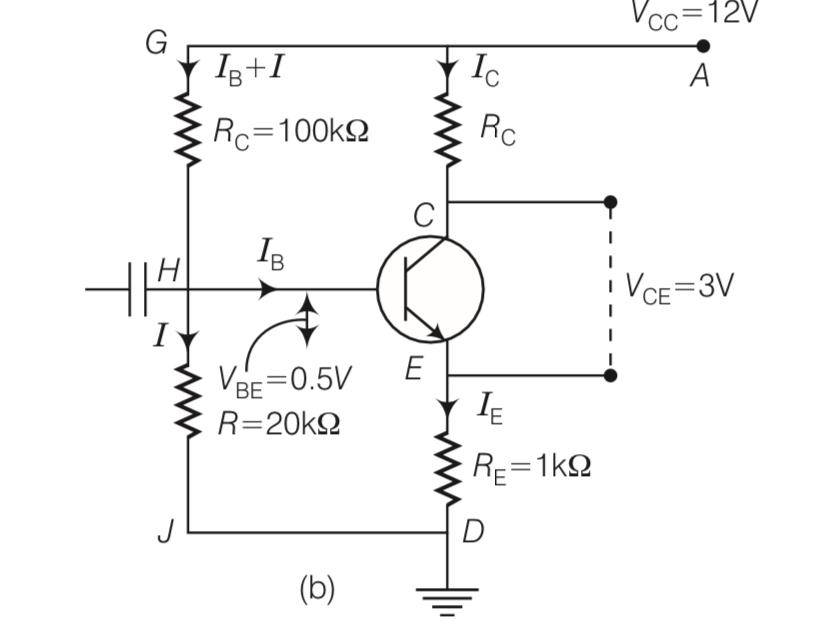
From above equation
(R+ E)IB=VCC-VBE
IB=
( )=
( )=1.56
Rc=1.56-1=0.56kohm
New answer posted
6 months agoContributor-Level 10
This is a Long Answer Type Questions as classified in NCERT Exemplar
Explanation-Ic= IE
Rc= 7.8Kohm
Ic (Rc+RE)+VCE= 12
(RE+RC)
RE+RC= 9
RE= 9-7.3= 1.2kohm
VE= IE RE
= 1
Voltage VB=VE+VBE= 1.2+0.5= 1.7V
I=
Resistance RB=
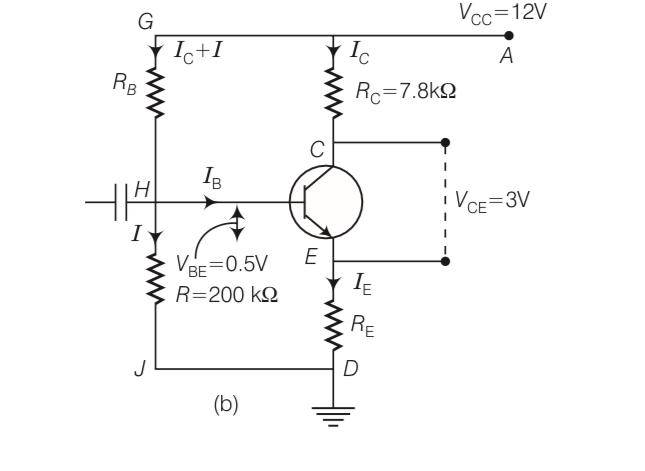
Taking an Exam? Selecting a College?
Get authentic answers from experts, students and alumni that you won't find anywhere else
Sign Up on ShikshaOn Shiksha, get access to
- 66k Colleges
- 1.2k Exams
- 680k Reviews
- 1800k Answers

